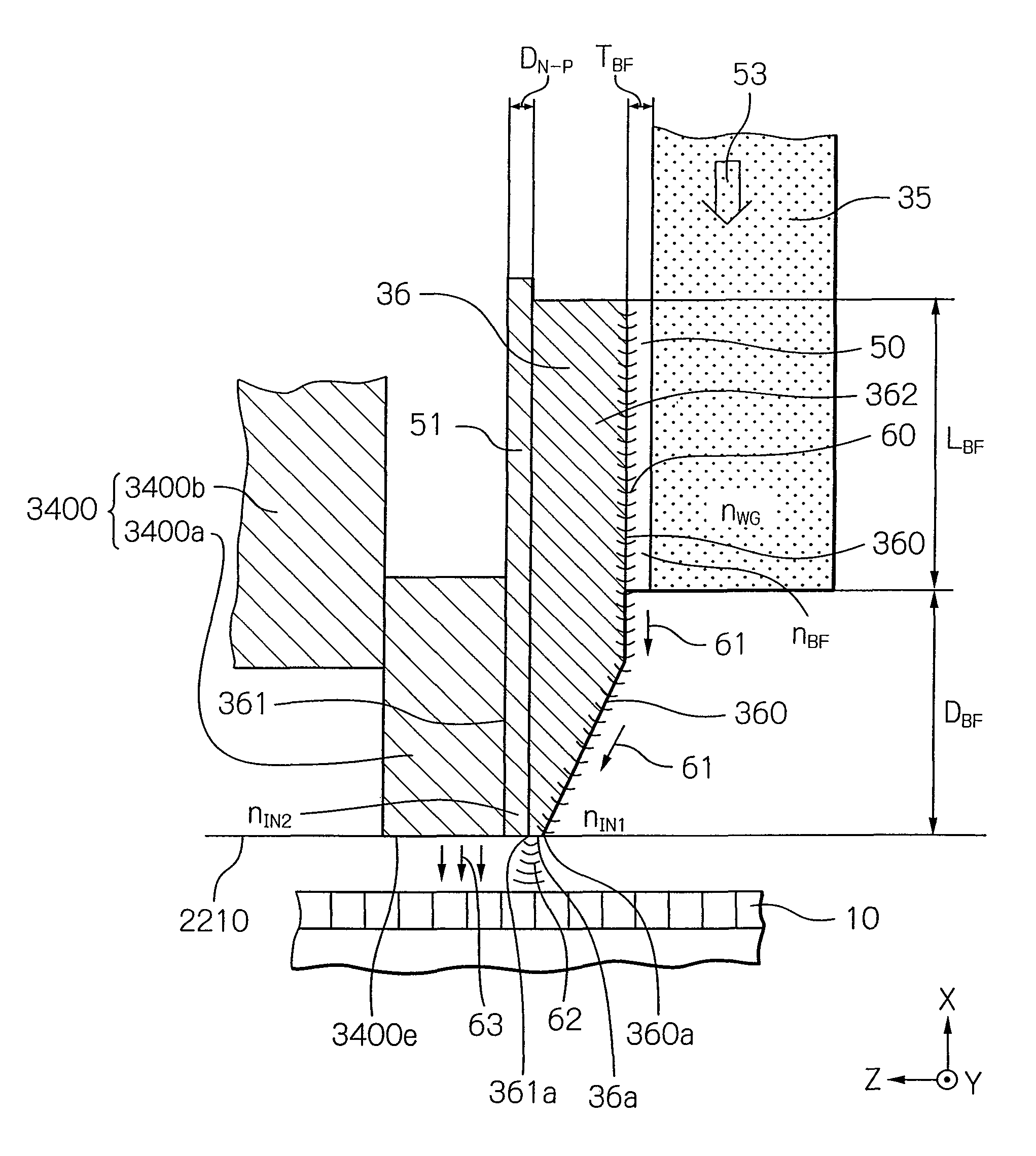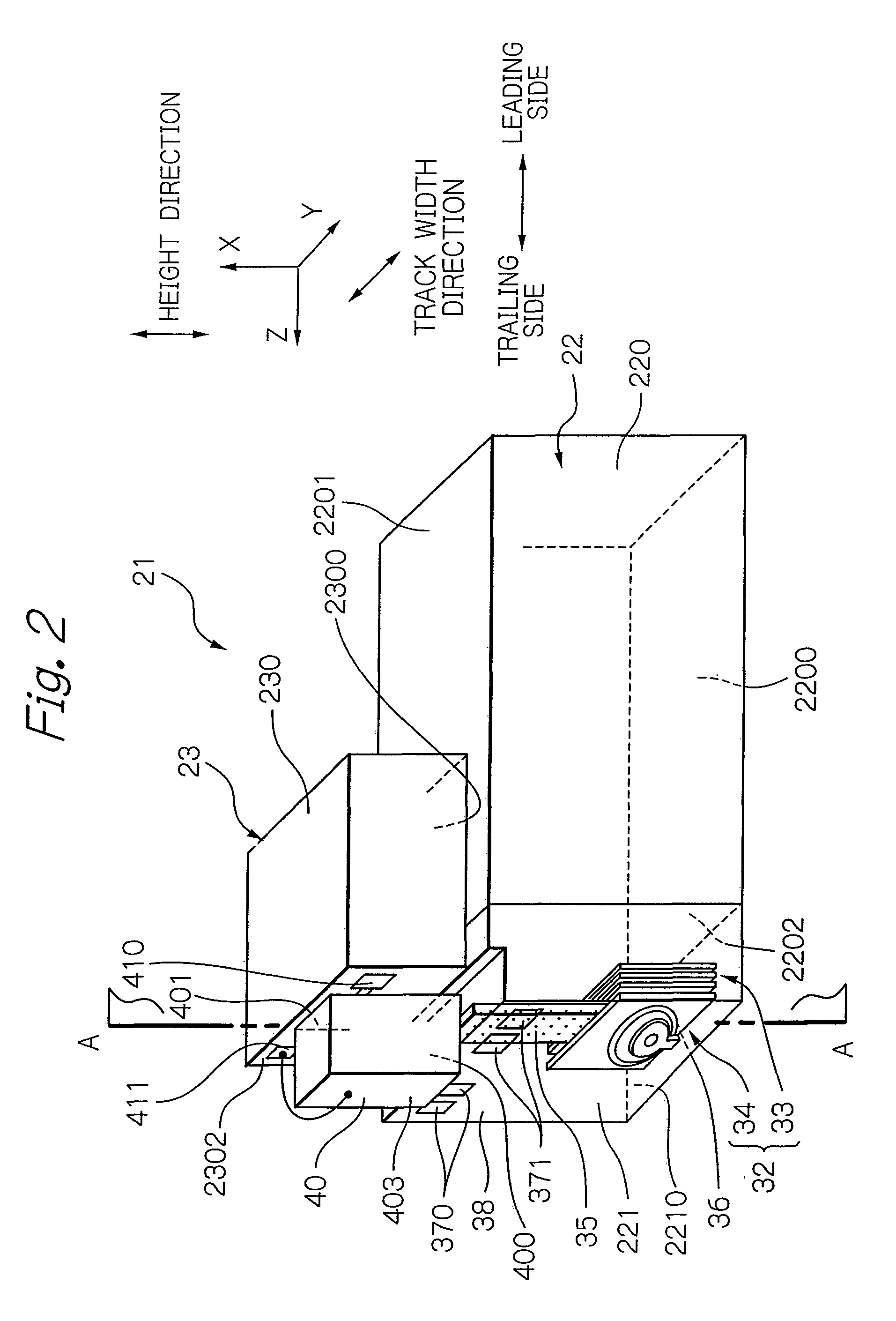Near-field light generating element utilizing surface plasmon
a surface plasmon and near-field light technology, applied in special recording techniques, instruments, nuclear engineering, etc., can solve problems such as difficult problems, head cannot write data to magnetic recording medium, and degradation of magnetization thermal stability
- Summary
- Abstract
- Description
- Claims
- Application Information
AI Technical Summary
Benefits of technology
Problems solved by technology
Method used
Image
Examples
Embodiment Construction
[0057]FIG. 1 shows a perspective view schematically illustrating a structure of a major part in one embodiment of a magnetic recording apparatus and an HGA according to the present invention. Here, in the perspective view of the HGA, the side of the HGA, opposed to the surface of the magnetic recording medium, is presented as the upper side.
[0058]A magnetic disk apparatus as a magnetic recording apparatus shown in FIG. 1 includes: a plurality of magnetic disks 10 as magnetic recording media, rotating around a rotational axis of a spindle motor 11; an assembly carriage device 12 provided with a plurality of drive arms 14 thereon; a head gimbal assembly (HGA) 17 attached on the top end portion of each drive arm 14 and provided with a thermal-assisted magnetic recording head 21 as a thin-film magnetic head; and a recording / reproducing and light-emission control circuit 13 for controlling write / read operations of the thermal-assisted magnetic recording head 21 and further for controllin...
PUM
| Property | Measurement | Unit |
|---|---|---|
| height | aaaaa | aaaaa |
| distance | aaaaa | aaaaa |
| temperature | aaaaa | aaaaa |
Abstract
Description
Claims
Application Information
 Login to View More
Login to View More - R&D
- Intellectual Property
- Life Sciences
- Materials
- Tech Scout
- Unparalleled Data Quality
- Higher Quality Content
- 60% Fewer Hallucinations
Browse by: Latest US Patents, China's latest patents, Technical Efficacy Thesaurus, Application Domain, Technology Topic, Popular Technical Reports.
© 2025 PatSnap. All rights reserved.Legal|Privacy policy|Modern Slavery Act Transparency Statement|Sitemap|About US| Contact US: help@patsnap.com



